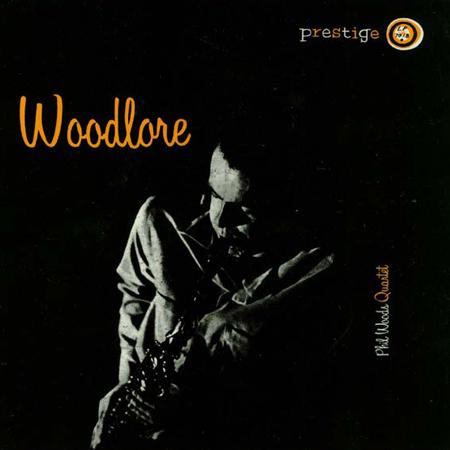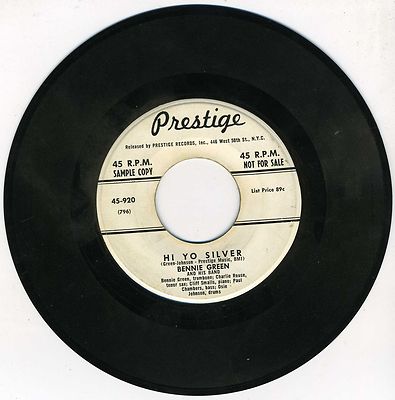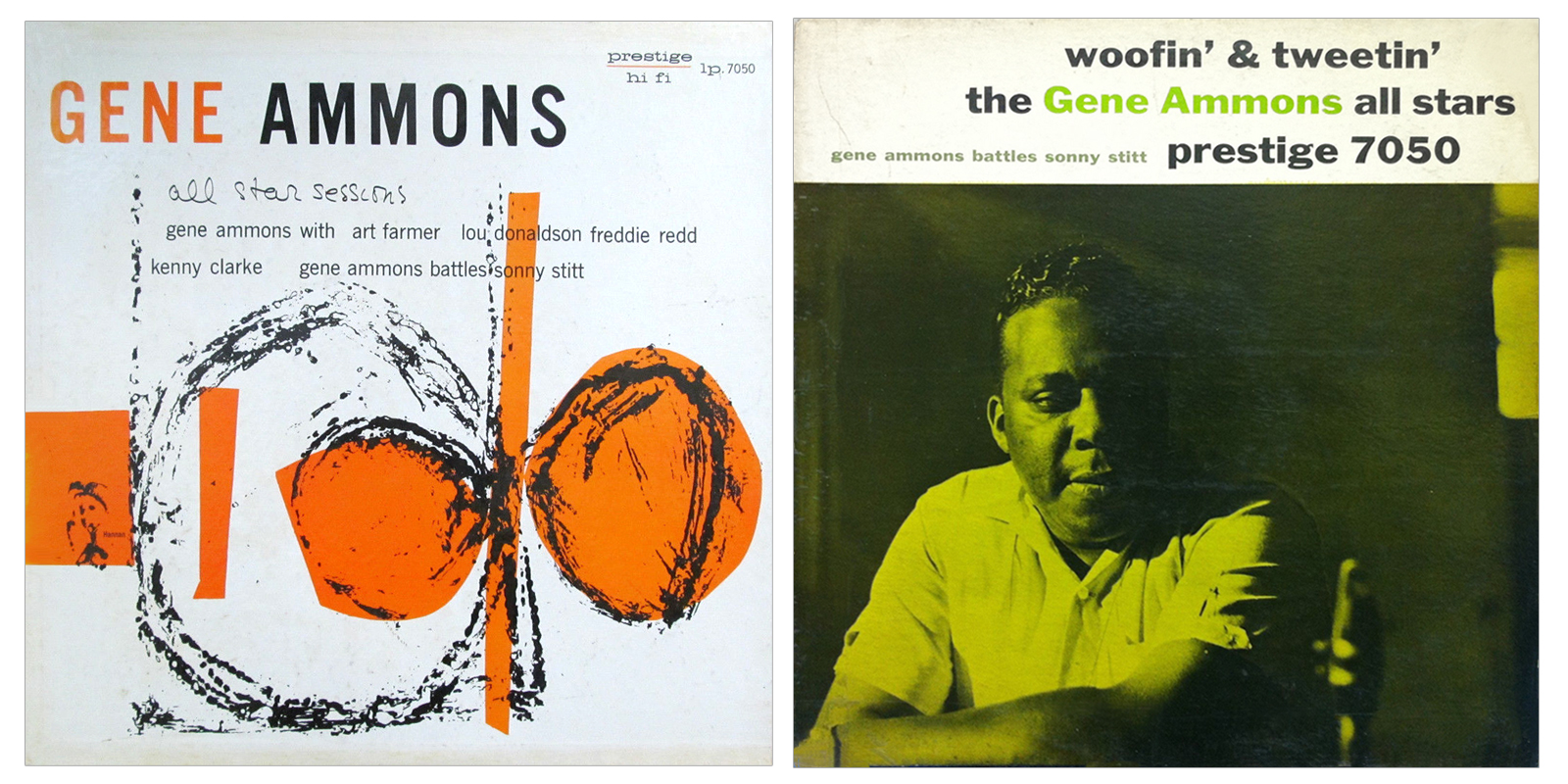The routine served Allen's purposes: to show off, which he had every right to do, it being his show and all; and to draw some of his vast TV audience into jazz, which was a good thing to do. And this anecdote has almost nothing to do with a rumination on James Moody and his septet and their Decmber session, which closed out 1955.
But it does say something about melody, and its importance. You can maybe make a jazz improvisation out of anything, but you're a lot better off starting with a good melody, and better yet, with a great melody.
But can you make effective and inspired jazz out of just any melody. Jazz musicians certainly seemed to think so,,and time and again, they proved their point. Kai Winding, on an early Prestige waxing, turned Mussorgsky's most famous composition into "A Night on Bop Mountain." John Lewis and the MJQ, with an assist from Laurindo Alameida, on Bach's "Fugue in A Minor." Wayne Shorter took on Sibelius; Eddie Daniels gave us his version of Satie. And Moody himself, in his Swedish days, gave us "Flight of the Bopple Bee."
A Swedish folk song became "Dear Old Stockholm." Sonny Rollins made jazz classics out of Jamaican calypso melodies. The beboppers even swung nursery rhymes (not always with satisfying results).
And more than once, the beboppers turned to operetta for imspiration: the ultimate Hip City meets the ultimate Squaresville. And more than once they made it work.
In this case, the operetta composer was Rudolf Friml, and the operetta was The Firefly, which was
supposed to have been composed by Victor Herbert, but he got furious with the diva around whom the show was being written, and stormed off the project, so the producers, in desperation, tapped the unknown Friml, and a star was born. Friml, that was, not the diva, Emma Trentini, who was already a star (and who seems to have gotten along better with Friml than with Herbert -- she was named as co-respondent in his first divorce).
When the 1912 operetta became a 1937 all-talking, all-singing vehicle for Jeanette MacDonald, the producers decided they needed one more boffo number, so they took a Friml orchestral piece, Chanson, added lyrics to it, and came up with one of Friml's biggest hits, if an unlikely source for bebop: "The Donkey Serenade."
Which brings us back to James Moody, and this recording session, with this particular bit of boperetta. Friml's music was a bit of a joke by the 1950s. Tom Lehrer, in his send-up of old Vienna, wrote "Your lips were like wine, if you'll pardon the simile / The music was lovely, and quite Rudolf Friml-y." But you don't choose to play a piece of music just to make fun of it, unless you're Weird Al Yankovic or Spike Jones (and even he was hip to the musical value of the songs he murdered). Moody starts out with a raucous approach to "The Donkey Serenade," including some nice braying by baritone sax player PeeWee Moore. But then Moody gets down to it, and what he gets down to is some incredible bebop improvisation on the alto, gutsy and adventurous, and you don't do that without some good, gutsy music to improvise from.
The rest of the session is great, too. "The Nearness of You" is beautiful, with Moody at his ballad best.
The days of the four-song session, yielding two 78s, are behind us now. The goal of a session, whether it took one or two days to complete, was a full 12-inch LP, although it didn't always work out that way. Like a hostile takeover by Gordon Gekko, this session was broken up and sold for parts, appearing on a couple of different albums. In any event, the new philosophy meant longer sessions, and Mark Feldman, owner of the admirable jazz label Reservoir Records, passed on to me this story from Rudy Van Gelder, about those sessions. Often, Van Gelder remembered, when five o'clock came around, and they still needed material to fill out the album, they'd swing into what Van Gelder came to call "The Five O'Clock Blues." an improvised jam on a blues riff. Generic blues? Well, maybe. But maybe not. The blues, in the hands of the musicians who made the trek to Hackensack, was rarely generic. Certainly not with this bunch, although happy hour may have come early and lasted late. There are two extended blues jams, "Wail, Moody, Wail," and "Moody's Blue Again." There are three, if you count "The Strut," a Benny Golson tune. Golson composed "Blues March,"
and this one is in the same vein.,
Too much blues? Decidedly not. Each number is different, and each is satisfying. I think my favorite is "Moody's Blue Again," which opens with the sort of riff one heard in the great rhythm and blues instrumentals of the era, and then becomes a vehicle for two guys, Moody and Burns, who know something about the blues, and know more than a little about bopping the blues.
"Wail, Moody, Wail," became the title cut of the album, and at 14-plus minutes, became most of the album. "The Strut" and "A Sinner Kissed an Angel" were pushed over to a later album, James Moody's Moods, and ultimately all were reunited on a CD reissue.
In this case, the operetta composer was Rudolf Friml, and the operetta was The Firefly, which was
supposed to have been composed by Victor Herbert, but he got furious with the diva around whom the show was being written, and stormed off the project, so the producers, in desperation, tapped the unknown Friml, and a star was born. Friml, that was, not the diva, Emma Trentini, who was already a star (and who seems to have gotten along better with Friml than with Herbert -- she was named as co-respondent in his first divorce).
When the 1912 operetta became a 1937 all-talking, all-singing vehicle for Jeanette MacDonald, the producers decided they needed one more boffo number, so they took a Friml orchestral piece, Chanson, added lyrics to it, and came up with one of Friml's biggest hits, if an unlikely source for bebop: "The Donkey Serenade."
Which brings us back to James Moody, and this recording session, with this particular bit of boperetta. Friml's music was a bit of a joke by the 1950s. Tom Lehrer, in his send-up of old Vienna, wrote "Your lips were like wine, if you'll pardon the simile / The music was lovely, and quite Rudolf Friml-y." But you don't choose to play a piece of music just to make fun of it, unless you're Weird Al Yankovic or Spike Jones (and even he was hip to the musical value of the songs he murdered). Moody starts out with a raucous approach to "The Donkey Serenade," including some nice braying by baritone sax player PeeWee Moore. But then Moody gets down to it, and what he gets down to is some incredible bebop improvisation on the alto, gutsy and adventurous, and you don't do that without some good, gutsy music to improvise from.
The rest of the session is great, too. "The Nearness of You" is beautiful, with Moody at his ballad best.
The days of the four-song session, yielding two 78s, are behind us now. The goal of a session, whether it took one or two days to complete, was a full 12-inch LP, although it didn't always work out that way. Like a hostile takeover by Gordon Gekko, this session was broken up and sold for parts, appearing on a couple of different albums. In any event, the new philosophy meant longer sessions, and Mark Feldman, owner of the admirable jazz label Reservoir Records, passed on to me this story from Rudy Van Gelder, about those sessions. Often, Van Gelder remembered, when five o'clock came around, and they still needed material to fill out the album, they'd swing into what Van Gelder came to call "The Five O'Clock Blues." an improvised jam on a blues riff. Generic blues? Well, maybe. But maybe not. The blues, in the hands of the musicians who made the trek to Hackensack, was rarely generic. Certainly not with this bunch, although happy hour may have come early and lasted late. There are two extended blues jams, "Wail, Moody, Wail," and "Moody's Blue Again." There are three, if you count "The Strut," a Benny Golson tune. Golson composed "Blues March,"
and this one is in the same vein.,
Too much blues? Decidedly not. Each number is different, and each is satisfying. I think my favorite is "Moody's Blue Again," which opens with the sort of riff one heard in the great rhythm and blues instrumentals of the era, and then becomes a vehicle for two guys, Moody and Burns, who know something about the blues, and know more than a little about bopping the blues.
"Wail, Moody, Wail," became the title cut of the album, and at 14-plus minutes, became most of the album. "The Strut" and "A Sinner Kissed an Angel" were pushed over to a later album, James Moody's Moods, and ultimately all were reunited on a CD reissue.






:format(jpeg):mode_rgb():quality(96)/discogs-images/R-4395456-1446070960-7324.jpeg.jpg)







:format(jpeg):mode_rgb():quality(96)/discogs-images/R-3470931-1331664507.jpeg.jpg)
:format(jpeg):mode_rgb():quality(96)/discogs-images/R-4006630-1437747376-3231.jpeg.jpg)





.jpg)

:format(jpeg):mode_rgb()/discogs-images/R-2615020-1293370836.jpeg.jpg)

:format(jpeg):mode_rgb()/discogs-images/R-5494901-1394841130-8848.jpeg.jpg)


